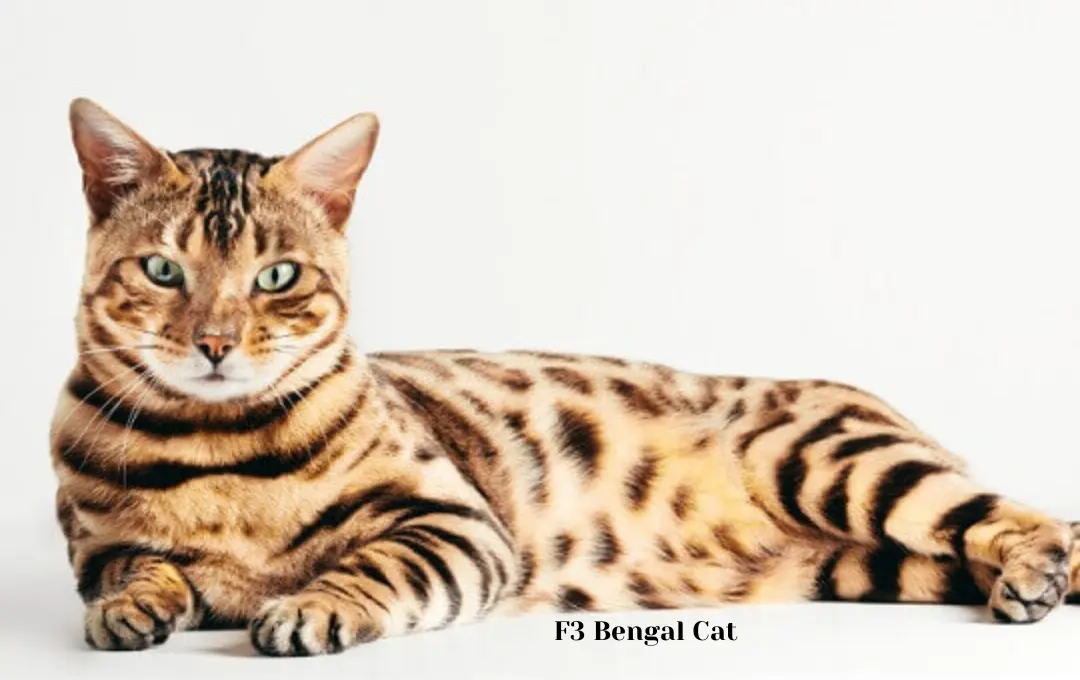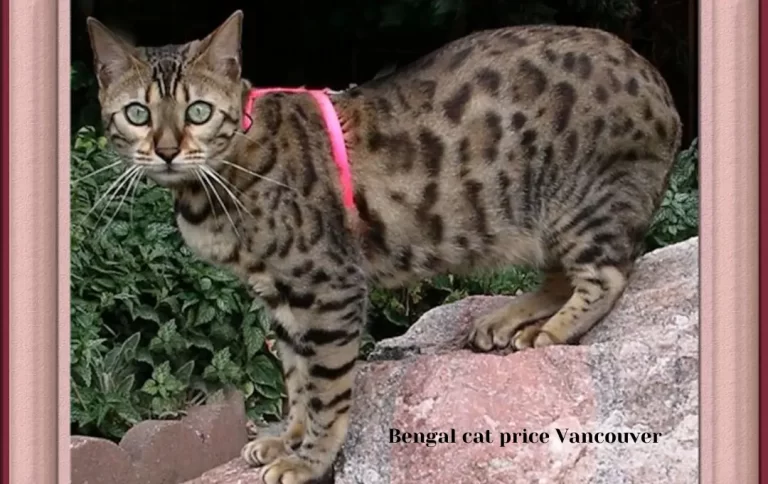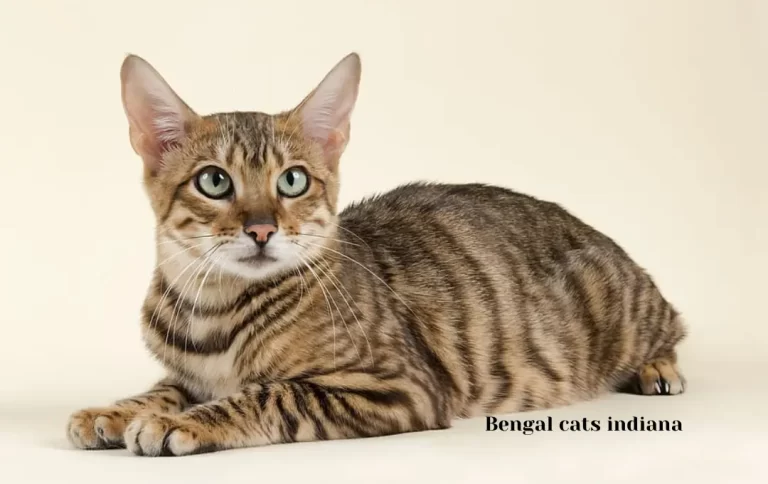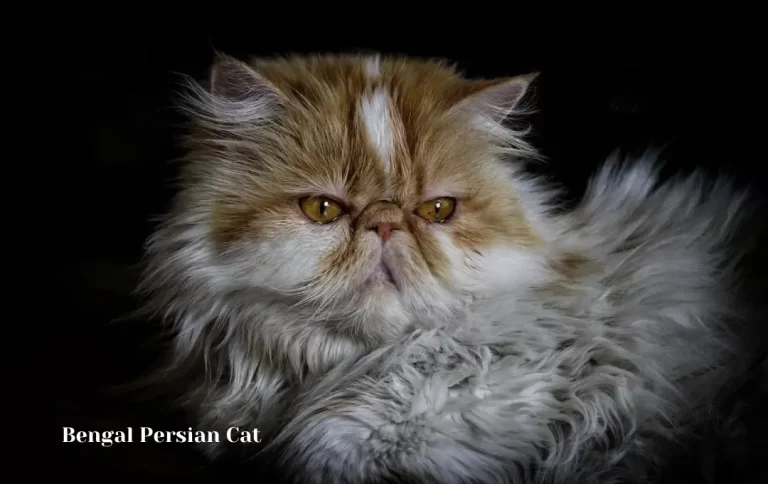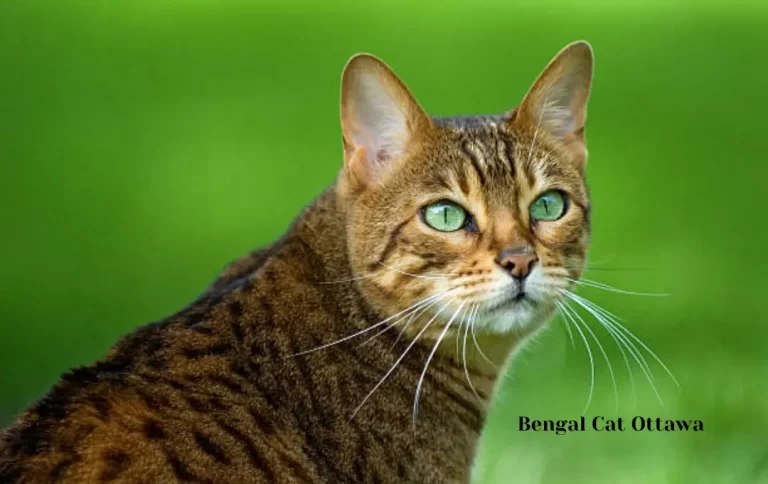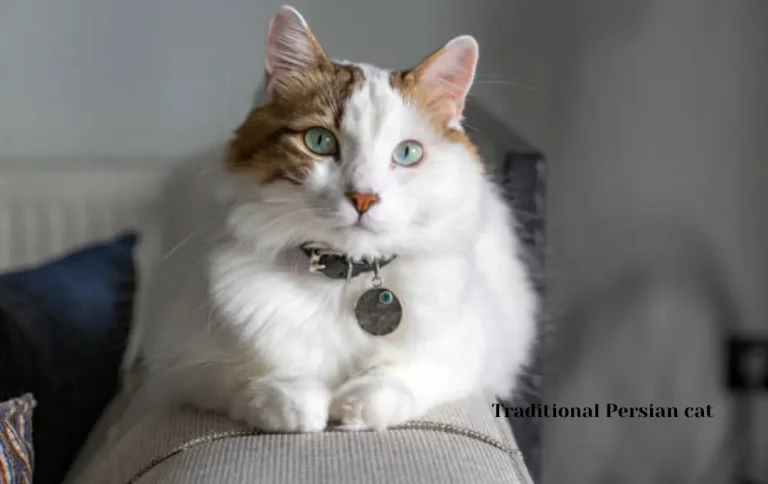Competitive F3 Bengal Cat Price | How Much do Bengal Kittens Cost: F1, F2, F3, And F4 … in 2023?
Few cat breeds are as admired and enthralled by their owners in the world of pet lovers and feline connoisseurs as the F3 Bengal cat. These cats have risen to prominence in the cat community thanks to their mesmerizing attractiveness, which is noted for their distinct wild appearance and friendly nature.
With a great focus on solving the secrets surrounding these exceptional cats, we set off on a fascinating voyage into the world of F3 Bengal cat price in this thorough guide. This introduction opens the door to a wealth of knowledge for people who are fascinated by these gorgeous animals, covering everything from comprehending the complex Bengal cat generations to learning the reasons for the growing popularity of F3 Bengals.
Understanding Bengal Cat Generations
It’s essential to have a fundamental understanding of Bengal cat generations in order to fully appreciate the appeal of F3 Bengal cats. Bengal cats are the offspring of domestic cats and Asian leopard cats (ALCs). This interbreeding produced a lineage of hybrid cats that are divided into several generations and identified by the letters F1, F2, F3, and so on. Each number in the ‘F’ stands for ‘Filial,’ and it indicates how many generations have passed from the first known Asian leopard cat ancestor.
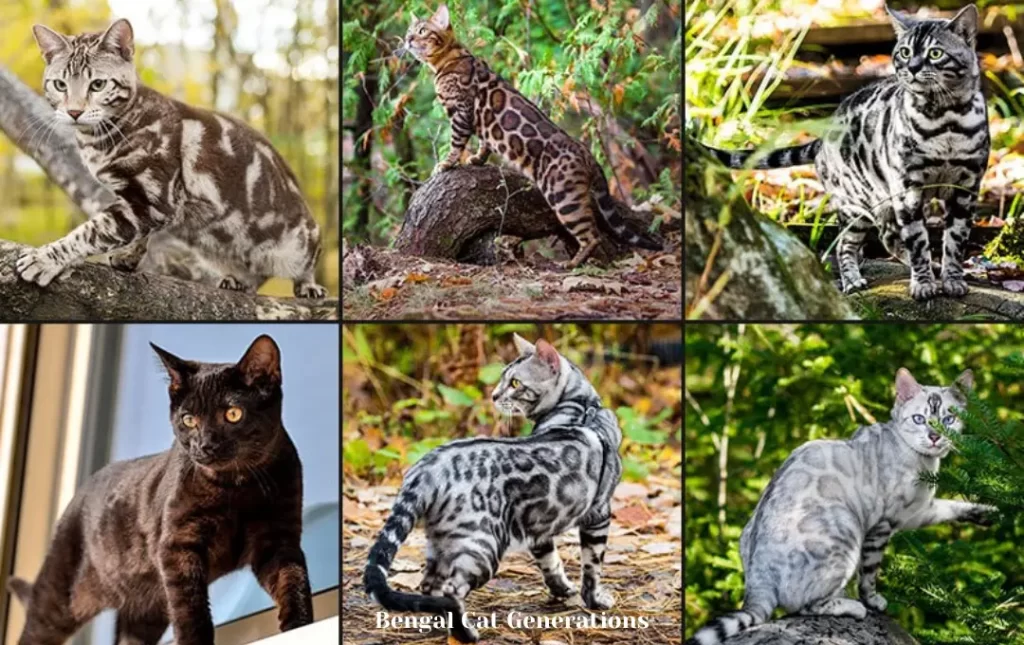
F1 Bengal Cats: These cats are one generation removed from the Asian leopard cat and often exhibit wilder behaviors and appearances. They are typically larger and more challenging to care for, making them a less common choice for pet owners.
F2 Bengal Cats: F2 cats are two generations removed from the ALC and tend to retain some of the wild traits of their ancestors, though they are more adaptable to domestic life compared to F1s.
F3 Bengal Cats: F3 Bengal cats are three generations away from the ALC. This generation is where many enthusiasts find the perfect balance between wild aesthetics and domestic temperament. F3 Bengals are known for their stunning coat patterns and friendly, playful nature, making them a top choice for pet owners.
Why F3 Bengal Cats Are Popular
F3 Bengal cats have gained significant popularity for several compelling reasons:
Aesthetically Pleasing Coat Patterns: F3 Bengal cats often exhibit exquisite coat patterns reminiscent of their wild ancestors. Their coats are characterized by rosettes, spots, and marbling that make them visually stunning and highly sought after by cat lovers.
Temperament: F3 Bengals are known for their friendly and social disposition. They are affectionate, interactive, and enjoy being part of the family. Their adaptability to indoor living and willingness to engage with their human companions make them wonderful pets.
Playful and Energetic: F3 Bengal cats are full of energy and thrive on playtime and stimulation. They enjoy interactive toys, climbing structures, and engaging in games with their owners. Their active nature can add a dynamic and entertaining element to any household.
Unique Personality: Each F3 Bengal cat has its own unique personality traits, but they often share a strong sense of curiosity and intelligence. They enjoy problem-solving and exploring their surroundings, which can be both entertaining and endearing for their owners.
F3 Bengal cats occupy a special place in the hearts of cat enthusiasts due to their stunning appearance and delightful personalities. Understanding their lineage and the factors that make them popular can help you appreciate the unique qualities of these remarkable feline companions. In the following sections of this article, we will explore in more detail the factors that influence the price of F3 Bengal cats and provide insights into finding and caring for these captivating creatures.
Factors Influencing F3 Bengal Cat Prices
The price of an F3 Bengal cat can vary significantly based on several factors. To make an informed decision and understand the investment required, it’s essential to consider the following factors that influence F3 Bengal cat prices:

How much is a Bengal cat in 2023?
On average, a Bengal kitten costs between $1,500 to $2,500. The average tends to be about $2,000. However, prices can range from as low as $800 to as high as $10,000 or more.
Breeder Reputation:
The reputation of the breeder plays a crucial role in determining the price of F3 Bengal cats. Reputable breeders who prioritize the health and well-being of their cats and adhere to ethical breeding practices often charge higher prices. They invest in proper care, socialization, and genetic testing, ensuring that you receive a healthy and well-adjusted kitten.
Pedigree and Bloodlines:
The lineage of an F3 Bengal cat can significantly impact its price. Cats with prestigious pedigrees and exceptional bloodlines may command higher prices. Pedigrees provide a documented history of the cat’s ancestors, which can include championship titles and recognition within Bengal cat associations.
Coat Color and Pattern:
Bengal cats are renowned for their striking coat patterns, which can vary from rosettes to spots to marbling. The rarity and uniqueness of the coat pattern can influence the price. Cats with highly desirable and distinctive coat patterns may be more expensive. Additionally, some colors, such as snow Bengals, tend to be rarer and may come with a higher price tag.
Health and Genetic Testing:
Responsible breeders prioritize the health of their cats. Kittens from breeders who conduct thorough health and genetic testing are likely to be more expensive. Genetic testing helps identify and mitigate potential hereditary health issues, ensuring that your F3 Bengal cat is less likely to develop genetic conditions.
Spaying/Neutering and Vaccinations:
The cost of spaying or neutering and vaccinations is typically included in the purchase price of an F3 Bengal cat. These procedures are essential for the cat’s health and population control. Responsible breeders ensure that these services are provided before the cat goes to its new home, which can affect the overall price.
Additional Services and Guarantees:
Some breeders offer additional services and guarantees as part of the purchase price. This may include microchipping, a health guarantee, initial supplies, and ongoing support. These added services can influence the overall cost of acquiring an F3 Bengal cat.
Geographic Location:
Prices for F3 Bengal cats can vary by geographic location. In areas with a higher demand for Bengal cats and fewer breeders, prices may be higher. Conversely, in regions with more breeders and less demand, prices might be more competitive.
Competition and Timing:
Timing can also affect prices. During peak kitten seasons, prices may be higher due to increased demand. On the other hand, waiting for the off-peak season or adopting an older F3 Bengal cat may result in a more affordable purchase.
Understanding these factors can help you navigate the market for F3 Bengal cats more effectively and make an informed decision when selecting a breeder and a kitten that aligns with your preferences and budget. Be prepared to research, ask questions, and prioritize the health and well-being of your future feline companion.
Average Cost of F3 Bengal Cats
The cost of F3 Bengal cats can vary widely depending on several factors, as discussed in the previous section. Here, we’ll provide an overview of the price range for F3 Bengal cats and how it can vary by region.
Price Range Overview:
F3 Bengal cat price typically falls within a range of $1,000 to $5,000 or even higher. This range is influenced by factors such as breeder reputation, pedigree, coat color and pattern, health testing, and geographic location. Below, we’ll break down this price range further:
Lower End of the Range ($1,000 – $2,500):
Cats in this price range may come from breeders who prioritize pet quality over show quality.
They may have less prestigious pedigrees or less distinctive coat patterns.
Breeders in regions with more competition or lower demand may price their kittens in this range.
Mid-Range ($2,500 – $3,500):
This is a common price range for F3 Bengal cats from reputable breeders who invest in health testing, socialization, and quality care.
Cats in this range often have better pedigrees and more visually appealing coat patterns.
Breeders in regions with moderate demand and competition may fall into this range.
Higher End of the Range ($3,500 – $5,000+):
F3 Bengal cats in this price range typically come from breeders with impeccable reputations and show-quality cats.
They may have outstanding pedigrees with championship titles.
Unique coat patterns, rare colors, or other exceptional attributes can drive up the price.
Breeders in areas with high demand and limited supply may set their prices at this level.
Variations in Prices by Region
Prices for F3 Bengal cats can also vary by region due to differences in supply and demand, local economies, and breeder availability. Here are some regional price variations you might encounter:
Urban Areas and Major Cities: Prices tend to be higher in urban areas and major cities, where there is often greater demand for pedigree cats. Breeders in these areas may charge more due to higher operating costs.
Rural or Less Populated Areas: In rural or less populated areas, where there may be fewer breeders and lower demand, prices might be more competitive. You may find F3 Bengal cats at the lower end of the price range in these regions.
Coastal Regions: Coastal regions, especially those with a strong community of Bengal cat enthusiasts, might have higher prices due to competition among breeders and the popularity of the breed.
Inland or Less Developed Regions: Inland areas or regions with lower incomes might have more affordable F3 Bengal cats.
When considering the purchase of an F3 Bengal cat, it’s essential to research breeders in your region, compare prices and factor in additional costs such as vaccinations and spaying/neutering. Remember that a higher upfront cost from a reputable breeder can often result in a healthier and better-socialized cat, potentially reducing long-term veterinary expenses and providing a more rewarding ownership experience.
Finding a Reputable F3 Bengal Cat Breeder
Finding a reputable F3 Bengal cat breeder is crucial to ensuring you bring home a healthy, well-adjusted kitten. Here are steps and considerations to help you find a trustworthy breeder:
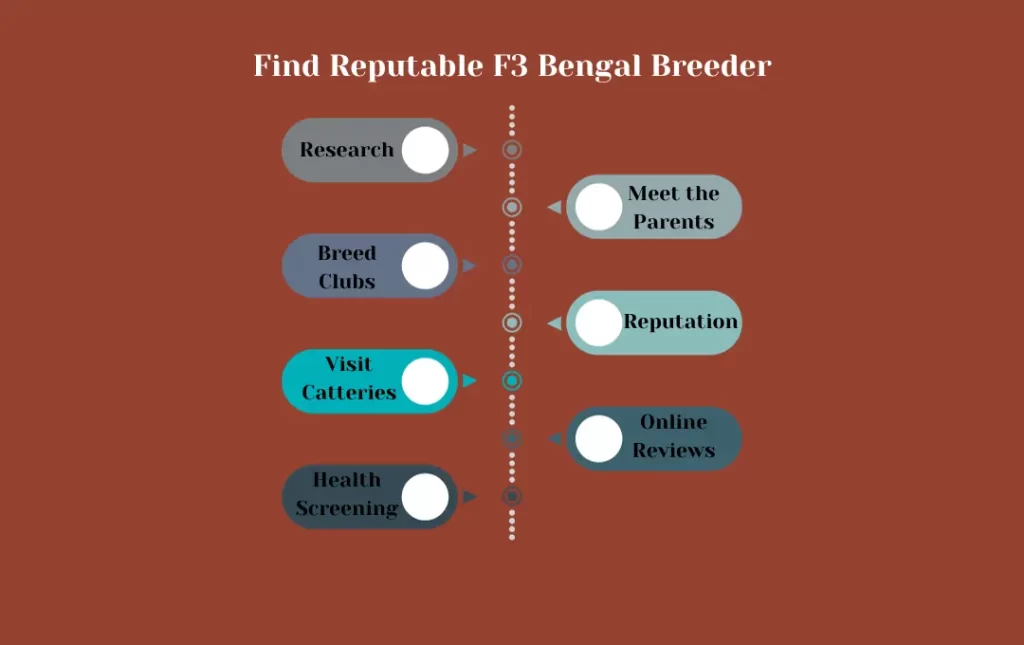
Research and Recommendations:
Online Research: Start by conducting online research to identify Bengal cat breeders in your area. Look for breeders who specialize in F3 Bengal cats.
Breed Clubs: Check if there are Bengal cat breed clubs or associations in your region. These organizations often maintain breeder directories and can provide valuable information.
Ask for Recommendations: Seek recommendations from Bengal cat owners, veterinarians, or local pet communities. Personal experiences and word-of-mouth can be invaluable in finding reputable breeders.
Questions to Ask Breeders:
When you’ve identified potential breeders, it’s essential to ask them questions to assess their credibility and the quality of their breeding practices. Here are some important questions to ask:
Breeding Practices:
How long have you been breeding Bengal cats?
Can you provide information about the lineage and pedigrees of your cats?
Do you conduct genetic testing on your breeding cats to screen for hereditary health issues?
What is your approach to socialization and raising kittens?
Health Care
Are the kittens spayed/neutered and up-to-date on vaccinations before they leave for their new homes?
Can you provide a health guarantee or contract?
Do you offer a record of the kitten’s health history, including vaccinations and deworming?
Cattery Conditions:
Can I visit your cattery to meet the cats and kittens in person?
What are the living conditions like for your cats and kittens?
How do you ensure the well-being and cleanliness of your cattery?
References:
Can you provide references from past buyers or other individuals in the Bengal cat community?
Have any of your cats or kittens won awards or titles in shows or competitions?
Ethical Considerations:
How do you handle rehoming or taking back cats if the need arises?
Are you involved in any rescue or Bengal cat-related organizations?
Contracts and Agreements:
Will you provide a written contract that outlines the responsibilities of both the breeder and the buyer?
What are the terms and conditions of your sales contract?
Reputable breeders should be willing and able to answer these questions openly and honestly. Be cautious if a breeder hesitates or avoids providing information.
Visiting Catteries:
Whenever possible, visit the cattery in person before making a commitment. This allows you to assess the living conditions of the cats and kittens, observe their socialization, and interact with the breeder. During your visit:
- Pay attention to cleanliness and hygiene in the cattery.
- Observe the temperament of the cats and kittens.
- Ask to see the kittens’ parents to assess their health and behavior.
- Take note of how the breeder interacts with the cats and whether they are genuinely passionate about the breed.
Remember that responsible breeders prioritize the well-being of their cats and kittens above all else. They are committed to producing healthy, well-socialized cats and are open to providing documentation and answering your questions. Avoid breeders who exhibit red flags such as inadequate health care, unsanitary conditions, or a lack of transparency.
By conducting thorough research, asking the right questions, and visiting catteries when possible, you can significantly increase your chances of finding a reputable F3 Bengal cat breeder who will provide you with a happy and healthy feline companion.
Additional Costs to Consider When Getting an F3 Bengal Cat
Acquiring an F3 Bengal cat involves more than just the initial purchase price. It’s important to budget for additional expenses to ensure the well-being and happiness of your new feline companion. Here are the main categories of additional costs to consider:
Initial Setup Expenses:
Purchase Price: The upfront cost of acquiring an F3 Bengal cat, as discussed earlier, can range from $1,000 to $5,000 or more.
Spaying/Neutering: Unless your cat is already spayed or neutered by the breeder, you’ll need to cover this cost, which typically ranges from $100 to $300.
Vaccinations: Ensure that your cat is up-to-date on vaccinations. Initial vaccinations can cost around $50 to $100, and there may be additional booster shots.
Microchipping: Many owners choose to microchip their cats for identification purposes. The cost is usually around $50.
Supplies and Equipment: You’ll need to invest in supplies such as a litter box, litter, food and water dishes, a scratching post, toys, a bed, and a carrier. These initial expenses can range from $100 to $300 or more, depending on your choices and the quality of the items.
Cat Tree or Climbing Structure: Bengal cats are known for their love of climbing and playing. Investing in a cat tree or climbing structure can provide mental and physical stimulation and may cost $50 to $300 or more.
Pet Insurance: While not mandatory, pet insurance can help cover unexpected medical expenses. Monthly premiums vary based on coverage and provider but typically range from $20 to $50.
Ongoing Expenses:
Food: High-quality cat food is essential for your Bengal’s health. Expect to spend approximately $20 to $50 per month on cat food, depending on the brand and dietary needs.
Litter: Litter expenses can vary, but budget around $10 to $20 per month for cat litter.
Routine Veterinary Care: Annual check-ups, vaccinations, and preventive medications (e.g., flea and tick control) can cost $200 to $500 per year.
Emergency Veterinary Care: Be prepared for unexpected vet bills in case of illness or injury. Setting aside a budget of $500 to $1,000 or more for emergencies is advisable.
Grooming: Bengals typically require minimal grooming, but occasional brushing and nail trimming may be necessary. Grooming tools and supplies can cost $10 to $50.
Toys and Enrichment: Keep your Bengal entertained with toys and enrichment activities. Budget an additional $10 to $20 per month.
Pet Sitting/Boarding: If you travel, consider the cost of pet sitting or boarding services, which can range from $15 to $50 per day or more.
Training and Behavioral Classes: While not mandatory, some owners invest in training or behavior classes, which can cost $50 to $200 per session.
Replacement Supplies: Over time, you may need to replace or upgrade supplies and equipment, such as scratching posts, toys, or bedding.
Remember that these costs can vary depending on your location, the specific needs of your cat, and your personal preferences. It’s essential to plan for both the initial setup expenses and ongoing costs to provide a happy and healthy life for your F3 Bengal cat. Responsible ownership includes budgeting for their care and well-being throughout their lifetime.
Adoption vs. Buying: Pros and Cons
When considering adding an F3 Bengal cat to your family, you have the option of adopting from a rescue organization or buying from a breeder. Each choice comes with its own set of advantages and disadvantages. Here’s a breakdown of the pros and cons of both adoption and buying:
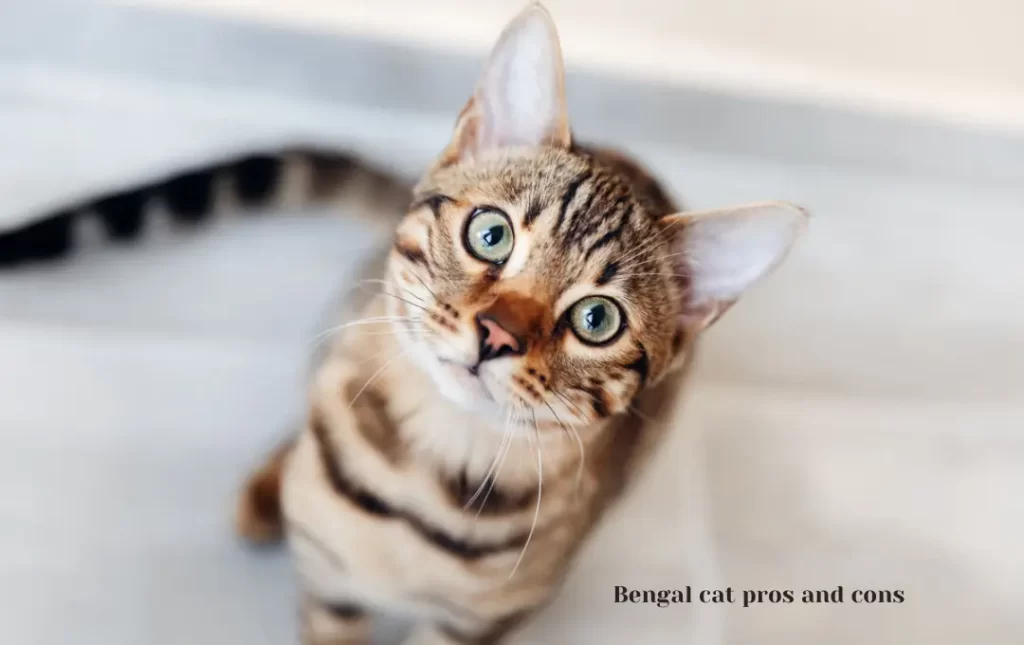
Pros of Adoption:
Rescuing a Cat in Need:
Pro: By adopting from a rescue organization or shelter, you provide a loving home to a cat in need. You may save a cat from homelessness or euthanasia.
Lower Cost:
Pro: Adoption fees are typically lower than the purchase price from a breeder, making it a more budget-friendly option.
Supporting Animal Welfare:
Pro: Adoption supports animal welfare initiatives and the work of rescue organizations that strive to improve the lives of animals.
Already Spayed/Neutered and Vaccinated:
Pro: Cats available for adoption are often spayed or neutered, vaccinated, and sometimes microchipped, saving you initial veterinary expenses.
Varied Ages and Personalities:
Pro: You can find cats of various ages, temperaments, and personalities in rescue organizations, allowing you to choose one that matches your lifestyle.
Cons of Adoption:
Limited Breed Options:
Con: If you have your heart set on an F3 Bengal cat or a specific breed, adoption may not always fulfill that desire.
Health and History Uncertainty:
Con: Cats available for adoption may have unknown medical histories or behavioral issues that require time and patience to address.
Pros of Buying:
Specific Breed and Traits:
Pro: Buying from a reputable breeder allows you to select a specific breed, such as an F3 Bengal cat, and potentially choose a kitten with specific traits, such as coat color and pattern.
Health Guarantees:
Pro: Responsible breeders often provide health guarantees, ensuring that your kitten is free from certain hereditary conditions.
Breeder Support and Expertise:
Pro: Breeders can offer valuable guidance on cat care, training, and breed-specific needs. You have a resource to turn to if you have questions or concerns.
Pedigree and Lineage:
Pro: Buying from a breeder may offer the opportunity to have a cat with a known pedigree and lineage.
Cons of Buying:
Higher Initial Cost:
Con: Purchasing an F3 Bengal cat from a breeder is often more expensive than adopting from a rescue organization.
Risk of Unethical Breeders:
Con: There is a risk of encountering unethical breeders who prioritize profit over the well-being of their cats. It’s crucial to research and choose a reputable breeder.
Supporting Breeding Industry:
Con: Buying from a breeder may indirectly support the breeding industry, which can contribute to overpopulation issues in some regions.
Ultimately, the decision between adoption and buying depends on your preferences, priorities, and the specific cat you are looking for. Whether you adopt or buy, it’s essential to do your research, choose a responsible source, and provide a loving and responsible forever home for your F3 Bengal cat.
Tips for Budgeting and Affording an F3 Bengal Cat
Acquiring an F3 Bengal cat is an investment, and it’s essential to budget carefully to ensure you can provide the best care for your new feline companion. Here are some tips for budgeting and affording an F3 Bengal cat:
Saving Strategies:
Set a Savings Goal: Determine how much you need to save for the initial purchase price, spaying/neutering, vaccinations, and supplies. Create a savings plan to reach your goal.
Start Early: Begin saving well in advance of getting your F3 Bengal cat. The earlier you start, the more financially prepared you’ll be.
Create a Dedicated Cat Fund: Open a separate bank account or use a designated portion of your savings for cat-related expenses. This helps you avoid mixing cat expenses with other financial commitments.
Cut Unnecessary Expenses: Identify areas where you can cut back on non-essential spending to allocate more funds for your cat. This might include dining out less, canceling unused subscriptions, or reducing impulse purchases.
Second-Hand Supplies: Consider buying gently used cat supplies, such as litter boxes, carriers, and scratching posts, to save money without compromising quality.
DIY Projects: If you’re handy, you can save money by building cat furniture or toys yourself instead of buying them pre-made.
Pet Insurance: While it’s an ongoing expense, pet insurance can help cover unexpected veterinary costs, providing peace of mind and preventing financial strain in emergencies.
Financing Options:
Payment Plans with Breeders: Some reputable breeders offer payment plans, allowing you to spread the cost of your F3 Bengal cat over time. Be sure to discuss this option with the breeder if it’s available.
Personal Loan: If you have a good credit score, you might consider taking out a personal loan to cover the initial purchase price and essential expenses. Ensure that you can comfortably manage the monthly payments.
Credit Card: Using a credit card with a reasonable interest rate can be an option for covering initial expenses, but it’s essential to pay off the balance as quickly as possible to avoid high-interest charges.
Pet Financing Programs: Some companies offer financing specifically for pet-related expenses, including the purchase price of a cat. CareCredit, for example, is a popular option for pet owners in the United States.
Crowdfunding: In some cases, pet owners turn to crowdfunding platforms to help cover unexpected medical expenses. While it’s not ideal for the initial purchase price, it can provide assistance in emergencies.
Pet Care Credit Card: Some credit cards are designed for pet-related expenses and may offer promotional financing with deferred interest.
Remember that while financing options can help you afford an F3 Bengal cat in the short term, it’s crucial to budget for ongoing expenses, including food, litter, veterinary care, and other essentials, throughout your cat’s life. Responsible ownership means providing proper care and meeting your cat’s needs while maintaining your financial stability.
frequently asked question
Conclusion
In conclusion, F3 Bengal cat price is influenced by a variety of factors, including breeder reputation, pedigree and bloodlines, coat color and pattern, health and genetic testing, spaying/neutering, vaccinations, and geographic location. F3 Bengal cats, known for their striking appearance and friendly temperament, are typically priced between $1,000 to $5,000 or more.
When considering the purchase of an F3 Bengal cat, it’s crucial to do thorough research to find a reputable breeder who prioritizes the health and well-being of their cats. Additionally, budgeting for both the initial setup expenses and ongoing costs, such as food, veterinary care, and grooming, is essential to ensure a happy and healthy life for your feline companion.

